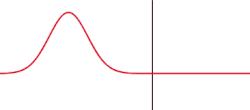Our website is made possible by displaying online advertisements to our visitors.
Please consider supporting us by disabling your ad blocker.
Fresnel equations

At near-grazing incidence, media interfaces appear mirror-like especially due to reflection of the s polarization, despite being poor reflectors at normal incidence. Polarized sunglasses block the s polarization, greatly reducing glare from horizontal surfaces.
The Fresnel equations (or Fresnel coefficients) describe the reflection and transmission of light (or electromagnetic radiation in general) when incident on an interface between different optical media. They were deduced by French engineer and physicist Augustin-Jean Fresnel (/freɪˈnɛl/) who was the first to understand that light is a transverse wave, when no one realized that the waves were electric and magnetic fields. For the first time, polarization could be understood quantitatively, as Fresnel's equations correctly predicted the differing behaviour of waves of the s and p polarizations incident upon a material interface.
Previous Page Next Page




